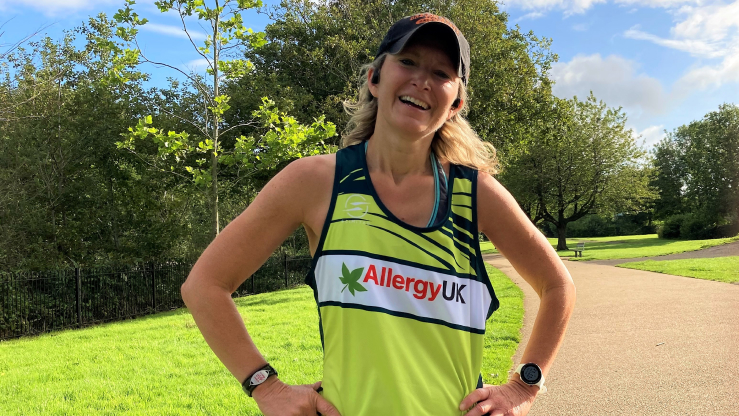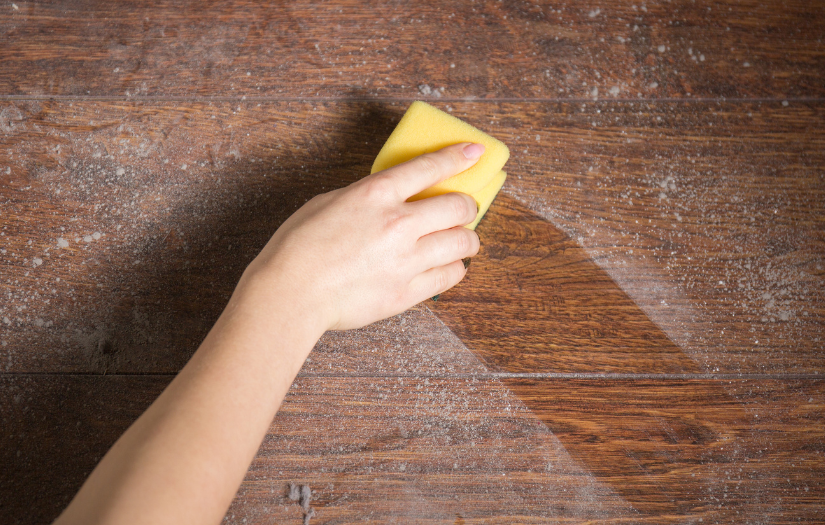
What is house dust mite allergy?
Learn more about house dust mite allergy and how it can trigger allergic rhinitis symptoms. Discover treatment options and the importance of seeking medical support at the right time.
 Hay Fever and Allergic Rhinitis | Allergy UK | National Charity
Hay Fever and Allergic Rhinitis | Allergy UK | National Charity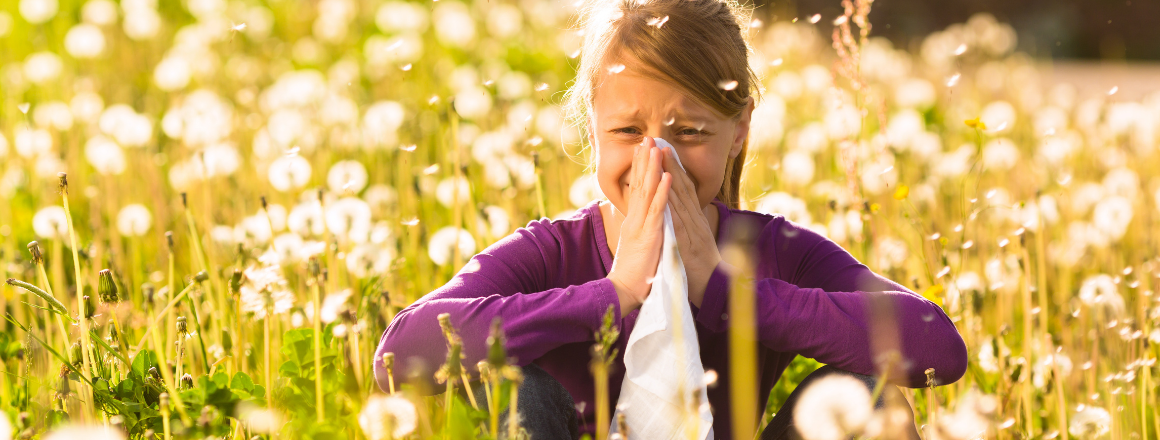
Hay fever, also known as allergic rhinitis, is an allergic reaction that occurs when the immune system overreacts to allergens present in the air. Common triggers include pollen, house dust mites, mould spores, and pet dander. When a person with hay fever comes into contact with these allergens, their immune system releases histamines and other chemicals, causing symptoms such as sneezing, runny or stuffy nose, itchy or watery eyes, itchy throat or ears, coughing and fatigue.
Hay fever symptoms can range from mild to severe and may vary depending on the allergen and the individual’s sensitivity. Seasonal allergies, often triggered by pollen, can cause symptoms during specific times of the year. However, some individuals may experience year-round symptoms due to allergens to indoor allergens.
Recognising the symptoms of hay fever and allergic rhinitis is crucial in managing its impact. Common signs and symptoms to look out for are:
Allergic rhinitis is often categorised into two main categories: seasonal and perennial. Understanding the differences between these types can help identify triggers and manage symptoms effectively.
Seasonal allergic rhinitis typically occurs during specific times of the year and is often associated with seasonal allergens such as pollen from trees, grasses, or weeds. Symptoms tend to manifest during seasons when these allergens are prevalent in the air. Hay fever is usually worse between late March and September, especially when it’s warm, humid, and windy. This is when the pollen count is at its highest.
Common characteristics of seasonal allergic rhinitis:
Perennial allergic rhinitis, on the other hand, refers to year-round symptoms that occur regardless of the season. This type of allergic rhinitis is usually caused by indoor allergens, such as dust mites, pet dander and mould spores.
Common characteristics of perennial allergic rhinitis:
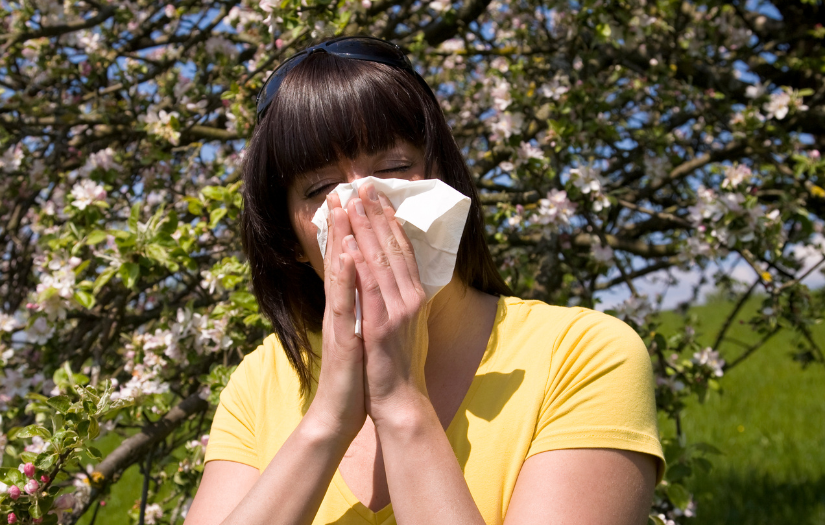
With expert-backed information and practical advice, download our factsheet on allergic rhinitis, which serves as an essential tool in educating individuals to navigate and manage the challenges facing those living with hay fever.
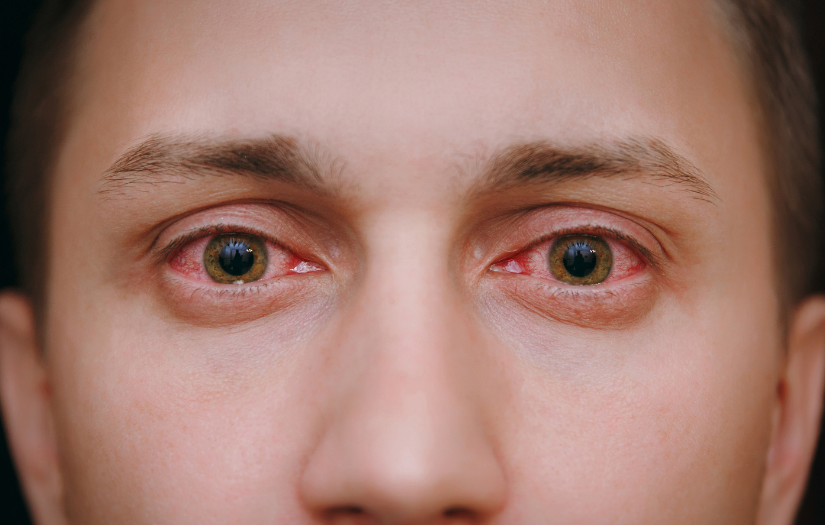
If your eyes itch and are red, tearing or burning, you may have allergic conjunctivitis also known as allergic eye disease. Many people will treat their nasal allergy symptoms but ignore their itchy, red, watery eyes.
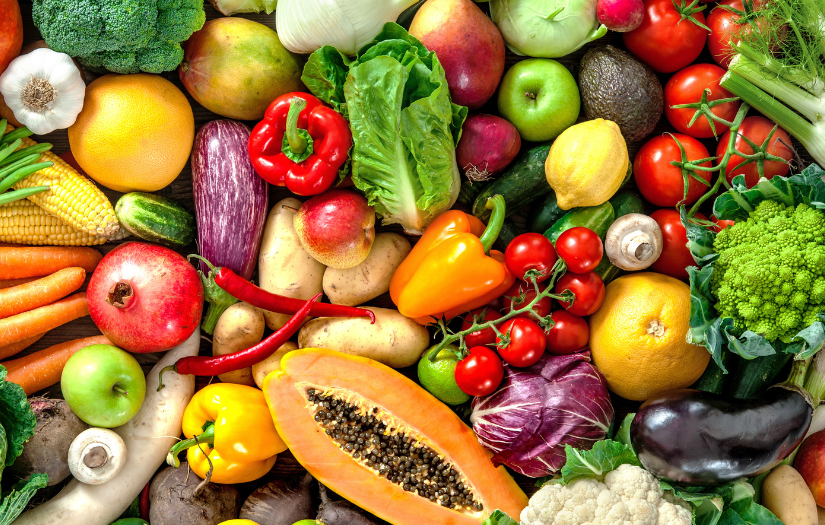
Pollen food syndrome, commonly referred to as oral allergy syndrome, is a hypersensitivity reaction to fruits, vegetables and nuts usually causing mild irritant symptoms such as itching of the mouth, lips and throat and often effects people with a sensitisation to grass, tree or weed pollen.
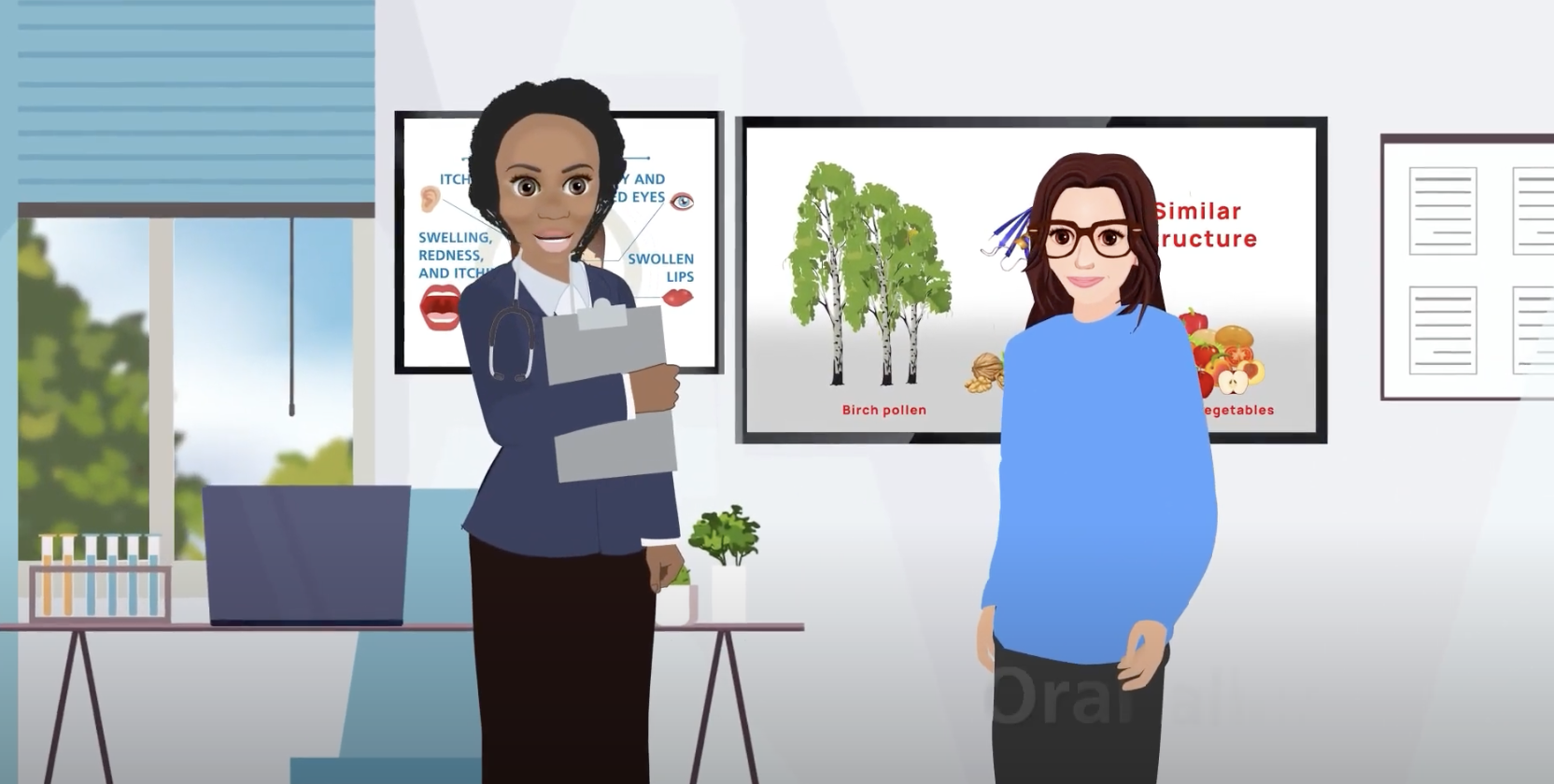
Do you experience itching in your mouth or throat after eating certain fruits, veggies, or nuts? You might have Pollen Food Syndrome (also known as Oral Allergy Syndrome). Learn more about the causes and how to manage it in our animated video.
Pinpointing which allergens are causing a person’s symptoms can significantly improve their quality of life. Avoidance measures, such as minimising exposure to triggers, can help alleviate symptoms, allowing individuals to lead more comfortable and productive lives.
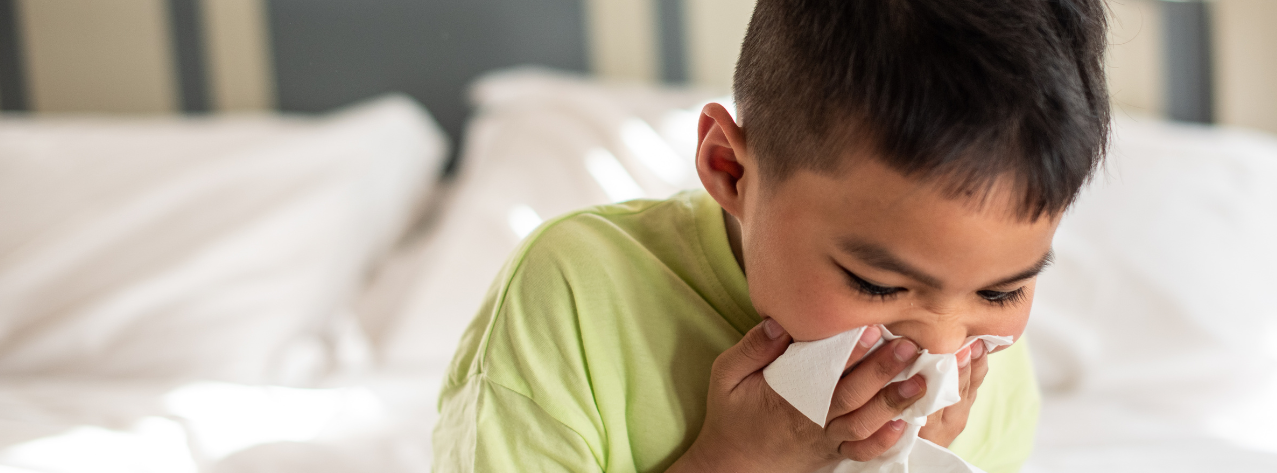
Understand your triggers and act early. Use our questionnaire to check if your symptoms could be linked to house dust mite allergy and get a PDF to share with your GP.
Allergy testing is not always required for hay fever because the triggers can be easily identified from the history of when and where symptoms occur. However, it is needed if the trigger is not obvious or if exact identification is needed for treatment such as immunotherapy. Skin prick tests or blood tests (specific IgE to the allergen to be tested) are the correct tests.
Speak to your GP or allergist about allergy testing, and based on your clinical history and symptoms, they can recommend the most suitable allergy testing methods available.
This common method involves placing small amounts of allergens on the skin’s surface and pricking or scratching the skin. The reaction, if any, indicates potential allergens causing your hay fever.
These tests analyse blood samples for specific antibodies produced in response to allergens. They provide a comprehensive overview of potential allergens triggering your hay fever symptoms.
Speak to your GP or allergist about allergy testing. Based on your clinical history and symptoms, they can recommend the most suitable allergy testing methods available.
If you are looking for help, advice or information, you can also call our Helpline on 01322 619898. They can advise on your nearest NHS allergy clinic or consultant. Alternatively, you can email your enquiry to [email protected] or use the web chat service to talk directly to one of our advisors.
Management of hay fever typically involves avoiding triggers when possible and using medications such as antihistamines, decongestants, nasal corticosteroids, and immunotherapy in severe cases.
Identifying the differences between seasonal and perennial allergic rhinitis is crucial for effective management. For seasonal allergies, strategies such as avoiding outdoor allergens during peak seasons, using over-the-counter antihistamines, and nasal sprays can help alleviate symptoms. Perennial allergic rhinitis may require measures such as improving indoor air quality, frequent cleaning, using air purifiers and other suitable appliances to help minimise exposure to indoor allergens.
Antihistamines are medicines often used to relieve symptoms of allergies, such as hay fever, urticaria, conjunctivitis and reactions to insect bites or stings.
Hay fever tablets are also sometimes used to prevent motion sickness and as a short-term treatment for insomnia. Most antihistamines can be bought from pharmacies and shops, but some are only available on prescription.
There are many types of antihistamines. They’re usually divided into 2 main groups:
They also come in several different forms – including tablets, capsules, liquids, syrups, creams, lotions, gels, eye drops and nasal sprays. Non-drowsy antihistamines are generally the best option, as they’re less likely to make you feel sleepy. But types that make you feel sleepy may be better if your symptoms stop you from sleeping.
Ask a pharmacist for advice if you’re unsure which medicine to try, as not all antihistamines are suitable for everyone.
When allergies strike, nasal sprays can help. There are many different types, and most work faster than tablets. You can buy them over the counter at most supermarkets and pharmacies, or your doctor can prescribe one to relieve a stuffy or runny nose.
Many people don’t realise that using your nasal spray incorrectly can reduce its effectiveness. You can download our handy how to guide to help promote correct use.
Immunotherapy, often referred to as desensitisation, is a unique treatment for allergic diseases. It is a well-established treatment reserved for certain severe allergies, such as when someone has had a serious allergic reaction to wasp or bee venom or severe allergic rhinitis that has not been previously controlled by any of the anti-allergy medications tried.
Immunotherapy usually involves the administration of increasing doses of allergen extracts over a period of time, given to patients by injection or drops/tablets under the tongue (sublingual). The house dust mite sublingual tablet, Acarazax, is now licensed and has gone through NICE approval so can be prescribed on the NHS.
Food allergen desensitisation aims to reduce reactivity to the allergen and is done under very controlled medical conditions (currently only available privately), but newer approaches to administration (such as by a skin patch that is worn and replaced) may become available in the future. These types of approaches to food desensitisation are very new and not widely available yet, but it is something to provide hope for in those at risk of severe food allergic reactions.
Managing your hay fever involves a combination of identifying triggers, implementing preventive measures, and utilising appropriate medications or treatments. By adopting proactive strategies and seeking professional guidance from a healthcare professional, you can effectively minimise the burden of hay fever and regain control over your quality of life. Find our 4 top tips below:
A pollen calendar is a useful tool that tracks the presence and concentration of various types of pollen in the air throughout the year. It typically displays the expected periods of increased pollen levels for specific allergenic plants or trees. By knowing the typical peak seasons for specific pollen types, individuals can anticipate and prepare for periods when their allergy symptoms might worsen.
Using a pollen calendar can help in planning medication usage, for instance, individuals can start taking preventive medications or adjusting treatment strategies before the onset of high pollen seasons.
Understanding the link between allergic rhinitis and asthma is important, as both conditions often coexist and can exacerbate each other’s symptoms. Managing both allergic rhinitis and asthma is essential for overall health and improved quality of life.
Allergic rhinitis and asthma share a strong connection, often referred to as the ‘united airway disease.’ Individuals with allergic rhinitis are at a higher risk of developing asthma, and those with asthma commonly experience allergic rhinitis symptoms. The inflammation caused by allergens in the nasal passages of allergic rhinitis can extend to the lower airways, potentially triggering or worsening asthma symptoms.
Seeking guidance from healthcare professionals for an integrated treatment plan targeting both conditions is key to effective management.

Click here to view Greg’s story, an inspirational video from one of our amazing supporters on hay fever and the effects it can have on an individual’s daily routine and social life.
A 2020 study by Allergy UK and Kleenex® suggests a surge in UK hay fever sufferers over the last few years
are anxious that others may mistake their symptoms for signs of Covid-19
report suffering from hay fever symptoms
have developed symptoms for the first time in the last five years
It is important to Allergy UK that we can engage with all people that are affected by allergic disease
Join our mailing list
